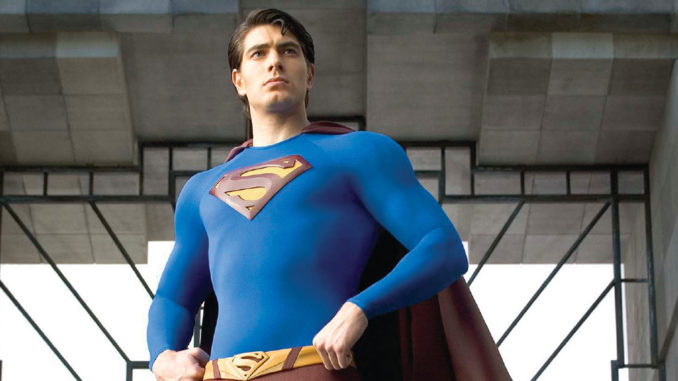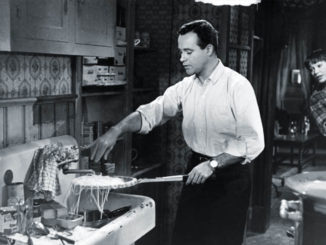
by Michael Kunkes • photos by Blair Miller
If you think the Man of Steel has his hands full saving the world in Superman Returns, you should see what the film’s team of assistant editors, led by Liza Espinas-Regnier, had to accomplish in order to get this show onto the screen.
Espinas-Regnier describes her role as a first assistant editor in rather conventional fashion, basically as a twofold task: to assist the editors in whatever they need, and to manage and run the cutting room. It was a task which entailed interfacing with the studio, the producers, the production, sound, music and visual effects departments, marketing people and assorted outside vendors. But those descriptions really don’t come close to approaching the mammoth achievements of the team she assembled, trained and shepherded over 16 months of production and post for the Warner Bros. summer release.
“As a first, you don’t always get to choose the movies you work on,” says Espinas-Regnier, whose recent assistant credits include I, Robot, The Bourne Identity and American Wedding. “ I was interested in Superman Returns because it was directed by Bryan Singer, whose work I respect, and secondly, because the challenge of working with cutting-edge technology [starting and finishing in high definition] really intrigued me.”
Once she was on the show, the first decision she made was the type of Avid system to use, and Espinas-Regnier opted for the older, Mac OS 9–based Meridien systems. “We were going to be shooting with Panavision’s Genesis camera, which had never been used to shoot a full feature before, and also some film. I wanted us to be on the most stable, reliable systems, which at the time were Media Composer V11.2.6 Meridiens.”
Of course, a show like Superman Returns is being marketed from day one. In Australia, a local assistant was working on a ComicCon reel and the “sizzle” reel, and in Los Angeles, the two trailer editors, Asma and Childress, were in-house––an unusual situation because trailer editors are usually outside vendors.
The editorial crew that went to Sydney, Australia in February of 2005 for over eight months of production (with one month off) consisted of Espinas-Regnier, editor Elliot Graham and visual effects editor Jeff Beattie, with fellow editor John Ottman joining the crew in May. A second assistant, Brett McManus, was hired in Sydney, along with two other editorial assistants. According to Espinas-Regnier, “Brett’s primary role was the loading and prepping of dailies, which included the usual checking and/or fixing sync, cross-referencing flex files against burn-ins, prepping the clips in both text and frame view, and entering data into the codebook. When he was finished, I would check the dailies, organize them into their appropriate scene bins and then pass them on to the editors.”
While down under, Espinas-Regnier got an opportunity to exercise her own creative chops, editing newsreels that were cut into the monitors playing at the offices of the Daily Planet newspaper office in the film, in addition to various sound editing duties and rough cuts of various scenes. “Elliot told me when I interviewed that he was looking for a first who would be able to help with creative stuff,” she says. “That’s an opportunity that every first wants to have.”
The more than 1,500 visual effects shots––everything from simple monitor comps to full-screen computer graphics shots, digital matte paintings, set extensions, etc.–– made it necessary to have Beattie on the show from beginning to end. “A majority of scenes were shot against green screen,” Espinas-Regnier says. “Only a handful didn’t involve a visual effects shot. Jeff was busy ordering scans, but also making several temp Avid comps so the editors and visual effects supervisor could have an idea of how a shot would look and how the plates were working together.”
Back in Los Angeles, the picture team consisted of Espinas-Regnier and second assistants Charles Kaplan, Roger Fenton and Dylan Firshein. With visual effects editors Beattie and Shannon Leigh Olds, visual effects assistants Andrew Loschin and Bethany Orlemann, trailer editors Dan Asma and Kevin Childress and post-production supervisor Steve Kaminsky, there were a total of 12 Avids in use. “Every first assistant has his or her own way of doing things, and I am a big believer in consistency,” says the first assistant. “I lay the groundwork for how I like things done; then we all share the workload together. Everything is channeled through me first; then I prioritize and divide the tasks among my crew.”
Another reason the project was so labor-intensive was the fact that the editorial team began conforming almost immediately after principal photography concluded.
Once Superman Returns moved to Dubbing Stage Ten at the Warner Bros. audio post facilities in Burbank, California, those tasks became very specific. “Charles and Roger stayed behind at Warner Hollywood [editing facility], so they could oversee the conform, while the editors, Dylan and myself worked on the stage. Elliot and John had me cut in all the visual effects shots and assist with picture changes. Then, once I finished updating the reels, I’d send them to Charles and Roger to give to visual effects and to our conformers, while Dylan and I fed the stage.”
For Olds, a veteran visual effects editor whose credits include Herbie Fully Loaded, Moulin Rouge, Peter Pan and Starship Troopers, this project was an entirely new challenge. “Everything is hinging on us––color, sound, picture; it’s very intense,” she says. “When I joined Superman Returns, I thought I would be spending most of my time doing hundreds of temp effects comps, being a librarian and ordering shots. Instead, they immediately hired two effects assistants and Joyce Cox, the visual effects producer, and placed me in a more supervisory position in the visual effects department. It’s quite different from what I am used to.” Olds reported to Mark Stetson, the visual effects supervisor, as the link between him and the editors. “You might say I was the ‘keeper of the knowledge,’ a liaison between the two departments,” she adds.
“My job has been mainly to work on our conform, but I’ll do any task Liza can’t get to,” says Kaplan, who serves as her right hand. “As a second, I have to learn Liza’s ways of operating, so when she hands me something, it can be done as close to her way as possible––because she runs a very tight, organized ship.” Although he didn’t get to cut any scenes, Kaplan did get to work on cutting in temp sound effects for a couple of big sequences. “As an assistant editor being handed something creative to do on a show, it’s important to give it my best,” he says. “Because I want the editors to know they can be comfortable giving me anything they need to.”
Of course, a show like Superman Returns is being marketed from day one. In Australia, a local assistant was working on a ComicCon reel and the “sizzle” reel, and in Los Angeles, the two trailer editors, Asma and Childress, were in-house––an unusual situation because trailer editors are usually outside vendors. “They shared our media and relied on us to do their turnovers since they didn’t have their own assistant,” explains Espinas-Regnier. “Their deadlines conflicted with those of the movie, so I put Charles in charge of facilitating most of their needs.”
“A majority of scenes were shot against green screen, Only a handful didn’t involve a visual effects shot.” – Liza Espinas-Regnier
In fact, just about everything on Superman Returns was done in-house, and that includes high-resolution conform company Digital Sandbox, which moved into the Warner Hollywood facility to act as scan facility, optical house and negative cutter. “For each conform, we generated a QuickTime from the Avid that they would use to build or check their conform against. We also generated a source EDL for the scans––which included handles we added on ourselves––a master EDL for the assembly and an optical EDL, plus an optical list where we manually typed in the keyframe information for each optical. Digital Sandbox also provided us with a QuickTime of their conform to check back against our Avid sequence before the files went to our DI facility, TDI,” Espinas-Regnier says. “Facilitating this process was very time-consuming, but the advantage was being able to instantly QC each conform before it went to TDI.”
Sharing the workload was necessary, given the long hours everyone put in on the project. “With new technology comes new workflows,” the first assistant says. “But the process is still the same, except that negative is replaced by hi-res scans of DPX files, and work picture––even tape––is replaced by Quick-Time. There are still all the various departments to feed, but on a show like this, their needs and requests multiply.
“For example, in the days of film, when a reel was ready to be turned over, we would send the work picture to a transfer house that would make all the dubs,” Espinas-Regnier continues. “Then, when the Avid first evolved, we would make one master tape on Beta SP or DigiBeta, which would be sent to transfer. But now, the transfer house is in the Avid, so when turning over––to sound, music, DI conformers, IMAX, etc.—not only did we have to make a separate QuickTime for each person with his or her name watermarked on it, but in some instances a DigiBeta back-up as well. This, along with the additional turnover elements—EDLs, picture change lists, OMF files, AIFF exports––kept the crew constantly busy throughout post.”
Another reason the project was so labor-intensive was the fact that the editorial team began conforming almost immediately after principal photography concluded, beginning with visual effects sequences. “Usually, you don’t start conforming until the first major screening,” Espinas-Regnier explains. “But we started conforming sequences for DI grading early on, so we could give our vendors graded clips to work with.”
Liza Espinas-Regnier describes her role as a first assistant editor in rather conventional fashion, but those descriptions really don’t come close to approaching the mammoth achievements of the team she assembled.
It’s unlikely that anyone involved with Superman Returns will get much sleep before the June 28 release date. “There’s always a little something you can do with a shot,” says Olds, in a statement typical of the creative nature of the assistants on this show. “No matter how finished it is, you always want to put an artistic flourish on it that might make the audience a little happier. So we’ll keep pushing it until someone finally says, ‘Pencils down.’”






